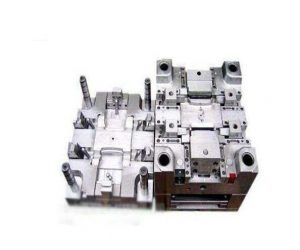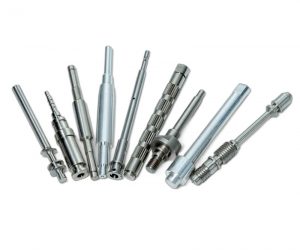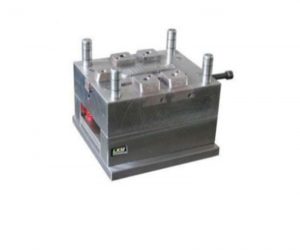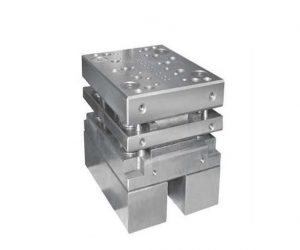Introduction
In the dynamic landscape of product development, Prototype Machining Services play a pivotal role. They are the cornerstone upon which innovative ideas transform into tangible, functional products. From the initial concept to the final market - ready item, prototype machining services act as a guiding force, ensuring that every aspect of the product is well - thought - out, tested, and refined.
Consider a startup in the consumer electronics sector. They have a revolutionary idea for a new portable device that combines multiple functions in a sleek, user - friendly design. Without prototype machining services, this idea would remain just that - an idea. Prototype machining allows them to take the first crucial step towards turning their vision into a physical product that can be tested, improved, and eventually mass - produced.
The importance of prototype machining services in product development cannot be overstated. It serves as a bridge between the abstract world of concepts and the practical world of manufacturing. In the following sections, Yigu Technology will delve deep into how these services impact different stages of product development, from design validation to cost - effective production planning.
The Basics of Prototype Machining Services
Definition and Concept
Prototype Machining Services refer to a set of manufacturing processes that are used to create a preliminary model or sample of a product. This prototype serves as a tangible representation of the final product design, allowing designers, engineers, and clients to evaluate its form, fit, and function before full - scale production begins. It's like building a small - scale model of a house before constructing the real one. You can check for any design flaws, make sure all the rooms are in the right place, and see if the overall structure is feasible. In the context of product development, prototype machining services are the first physical step towards bringing an idea to life.
Common Machining Techniques
- CNC Machining: CNC (Computer Numerical Control) machining is a highly precise method. It uses pre - programmed computer software to control the movement of factory tools and machinery. This technique can work with a wide range of materials, including metals like aluminum and steel, as well as plastics. For Yigu Technology example, in the aerospace industry, CNC machining is used to create complex engine components. The precision of CNC machining allows for tight tolerances, often within ±0.001 inches. This high level of accuracy ensures that the parts fit together perfectly, which is crucial for the performance and safety of aircraft engines.
- 3D Printing: Also known as additive manufacturing, 3D printing builds objects layer by layer from a digital model. It offers a high degree of design freedom, enabling the creation of complex geometries that would be difficult or impossible to achieve with traditional machining methods. For instance, in the medical field, 3D printing can be used to create custom - fit prosthetics. The process starts with a 3D scan of a patient's limb, and then a 3D printer builds the prosthetic based on the scan data. This allows for a more personalized and comfortable fit. However, 3D printing may have limitations in terms of material strength and production speed compared to other methods, especially for large - scale production.
- Injection Molding: Injection molding is a process where molten material, usually plastic, is injected into a mold cavity. Once the material cools and solidifies, the mold is opened, and the finished part is ejected. This method is suitable for producing high - volume prototypes with consistent quality. In the consumer electronics industry, many plastic parts such as smartphone cases are often prototyped using injection molding. It can produce parts with smooth surfaces and fine details, but the initial cost of creating the mold can be high, making it less cost - effective for very low - volume production.
- Sheet Metal Fabrication: This involves cutting, bending, and assembling flat sheets of metal to create a desired shape. Sheet metal fabrication is commonly used in the automotive and appliance industries. For Yigu Technology example, car body panels are often made through sheet metal fabrication. It can produce parts that are lightweight yet strong, and it allows for easy customization by changing the cutting and bending patterns. However, it may require additional finishing processes to achieve a high - quality surface appearance.
Here is a comparison table of these common machining techniques:
| Machining Technique | Precision | Material Options | Complexity of Design | Production Speed for High - Volume | Initial Cost |
| CNC Machining | High (±0.001 inches) | Wide range of metals and plastics | High, can create complex shapes | Medium - high | Medium - high (due to equipment cost) |
| 3D Printing | Varies (depends on printer) | Growing range including plastics, metals, ceramics | Very high, almost unlimited design freedom | Low (layer - by - layer process) | Low - medium (entry - level printers are affordable) |
| Injection Molding | High, consistent quality | Mainly plastics | High, can replicate fine details | High | High (mold creation cost) |
| Sheet Metal Fabrication | Moderate | Metals | Moderate, limited by bending and cutting capabilities | Medium | Low - medium (tools are relatively inexpensive) |
Real - World Examples and Case Studies
Automotive Industry
In the automotive industry, prototype machining services are indispensable. Take Tesla, for Yigu Technology example. When developing the Model Y, they utilized 3D printing, a form of prototype machining service, for the production of its rear chassis. Through 3D printing, they managed to integrate 70 different parts into a single component. This not only simplified the production process but also significantly reduced the weight of the vehicle, which in turn improved its energy efficiency.
Before finalizing the design, Tesla made multiple prototypes using various machining techniques. They tested different materials and geometries to ensure the optimal performance of the chassis. By doing so, they could identify and rectify potential issues in the early stages of development. This approach saved them a substantial amount of time and cost that would have been incurred during mass production if design flaws were discovered later. According to industry estimates, for a typical automotive component development, using prototype machining services can reduce the overall development time by about 30 - 40%. This allows car manufacturers to bring new models to market more quickly, gaining a competitive edge.
Medical Device Industry
In the medical device field, the importance of prototype machining services is even more pronounced due to the high - stakes nature of the products. Consider the development of a new surgical instrument. A medical device company first creates a prototype using CNC machining. This allows them to achieve the high precision required for surgical tools, with tolerances as tight as ±0.0005 inches in some critical components.
Once the prototype is ready, it undergoes rigorous testing in a simulated surgical environment. Surgeons and medical engineers evaluate its functionality, ergonomics, and safety. Based on the feedback, the design is refined, and new prototypes are created. This iterative process ensures that the final product meets the strict regulatory requirements and the high - performance standards expected in the medical field.
A case in point is the development of a new arthroscopic surgical device. The initial prototype was made using 3D printing to quickly test the basic design concept. However, for the more advanced prototypes that needed to meet the strength and durability requirements for actual surgical use, CNC machining was employed. Through this combination of techniques, the development time was reduced by approximately 25%, and the cost of development was cut by around 20% compared to traditional development methods that relied solely on one machining technique.
Consumer Electronics Industry
For consumer electronics, such as smartphones, prototype machining services play a crucial role in keeping up with the fast - paced market trends. A leading smartphone manufacturer, when designing a new model, uses injection molding to create prototypes of the phone's casing. This allows them to test the fit and finish of the design, as well as the functionality of features like the camera module placement and button responsiveness.
They also use CNC machining for creating prototypes of internal components, such as the motherboard. By making prototypes, they can optimize the layout of the components to improve heat dissipation and overall performance. In one instance, through prototyping, a smartphone company was able to reduce the thickness of their new phone by 10% while maintaining the same battery capacity and performance. This made their product more appealing to consumers in a highly competitive market. Additionally, the use of prototype machining services helped them reduce the number of design - related production issues by 50%, leading to a smoother mass - production process.
Choosing the Right Prototype Machining Service Provider
Factors to Consider
- Equipment and Technology: A reliable prototype machining service provider should be equipped with state - of - the - art machinery. For CNC machining, high - precision CNC machines are essential. The newer models often have advanced control systems that can achieve even tighter tolerances than older ones. For example, a provider with multi - axis CNC machines can create more complex geometries in a single setup, reducing the need for multiple operations and potential errors. When it comes to 3D printing, look for providers that offer a variety of 3D printing technologies such as Fused Deposition Modeling (FDM), Stereolithography (SLA), and Selective Laser Sintering (SLS). Each technology has its own advantages in terms of material options, precision, and surface finish, so a diverse range allows for more flexibility in prototype production.
- Experience and Expertise: Experience matters a great deal in prototype machining. A company that has been in the industry for a long time is more likely to have encountered and solved a wide range of problems. They will have a better understanding of different materials, machining techniques, and how to optimize the process for different types of products. For instance, a service provider with experience in the medical device industry will be well - versed in the strict quality and regulatory requirements of that field. They will know how to select the right materials that are biocompatible and can meet the high - precision demands of surgical instruments. You can also look at their portfolio of past projects to get an idea of the complexity and variety of prototypes they have produced.
- Cost - effectiveness: While cost should not be the sole determining factor, it is an important consideration. Get quotes from multiple service providers and compare not only the upfront cost but also the overall value. Some providers may offer lower initial prices but could have hidden costs such as for additional finishing processes, tooling changes, or rush orders. On the other hand, a slightly more expensive provider may offer better quality, faster turnaround times, or more comprehensive services. For example, a provider that can complete a prototype in a shorter time may save you valuable time in your product development cycle, which could be more beneficial in the long run. Analyze the cost - benefit ratio by considering factors like the quality of the prototype, the expected number of revisions, and the impact on your overall project timeline.
- Turnaround Time: In the fast - paced world of product development, time is often of the essence. A quick turnaround time can give you a competitive edge, especially if you are aiming to be the first to market with a new product. Find out from the service provider how long it will take to complete your prototype. Some providers offer expedited services for an additional fee, which can be a good option if you are on a tight schedule. However, be cautious that a very short turnaround time does not come at the expense of quality. A reliable provider should be able to balance speed and quality to meet your needs.
Evaluating Quality
- Inspection and Testing Procedures: A high - quality prototype machining service provider will have rigorous inspection and testing procedures in place. They should use precision measuring instruments such as coordinate measuring machines (CMMs) to check the dimensions of the prototype. CMMs can accurately measure the length, width, height, and angles of a part, ensuring that it meets the design specifications within the required tolerances. For example, if the design calls for a hole diameter of 5 ± 0.05 mm, the CMM can verify that the actual hole diameter falls within this range. In addition to dimensional inspection, they should also perform functional tests. If the prototype is a mechanical component, it should be tested to ensure that it functions as intended under various operating conditions.
- Material Quality: The quality of the materials used is crucial for the overall quality of the prototype. A good service provider will source materials from reliable suppliers and be able to provide documentation 证明文件 such as material certificates. For example, if the prototype is made of aluminum, the material certificate should indicate the alloy type, its mechanical properties like tensile strength and hardness, and any other relevant characteristics. This ensures that the material meets the required standards and is suitable for the intended application. Different materials have different performance characteristics, and using the wrong material or a low - quality material can lead to a prototype that does not accurately represent the final product or fails during testing.
- Surface Finish: The surface finish of the prototype can affect its appearance, functionality, and how it interacts with other components. A high - quality finish can make the prototype look more professional and also improve its performance. For example, in a prototype for a consumer product, a smooth surface finish can enhance the user experience. The service provider should be able to achieve the desired surface finish based on your requirements. They may use techniques such as polishing, sandblasting, or electroplating to achieve different levels of smoothness and texture. Inspect samples of their previous work to assess the quality of the surface finishes they can provide.
Conclusion
In Yigu Technology conclusion, Prototype Machining Services are an integral part of product development. They offer a cost - effective and efficient way to test, refine, and optimize product designs before mass production. The real - world examples from the automotive, medical device, and consumer electronics industries clearly demonstrate the significant impact of these services on reducing development time, cutting costs, and improving product quality.
When choosing a prototype machining service provider, it's crucial to consider factors such as equipment and technology, experience and expertise, cost - effectiveness, and turnaround time. Evaluating the quality of the service, including inspection and testing procedures, material quality, and surface finish, is also essential to ensure that the prototype accurately represents the final product.
If you're in the process of product development, don't underestimate the power of Prototype Machining Services. By leveraging these services, you can turn your innovative ideas into successful products more quickly and with greater confidence.
FAQ
1. What is the most cost - effective prototype machining technique for a small - scale project?
For small - scale projects, 3D printing is often a cost - effective option as the initial investment in equipment can be relatively low, and it doesn't require expensive tooling like injection molding. However, if the prototype needs to have high - strength materials and tight tolerances, CNC machining might be a better choice despite its higher upfront cost.
2. How long does it typically take to get a prototype from a machining service provider?
The turnaround time varies depending on the complexity of the prototype, the machining technique used, and the workload of the service provider. Simple 3D - printed prototypes can be completed in a few days, while more complex CNC - machined or injection - molded prototypes may take anywhere from one to four weeks.
3. Can prototype machining services help with improving the functionality of a product?
Yes, prototype machining services play a crucial role in improving product functionality. By creating physical prototypes, you can test the product's functions in real - world scenarios, identify design flaws, and make necessary adjustments to enhance its performance, usability, and overall functionality.





